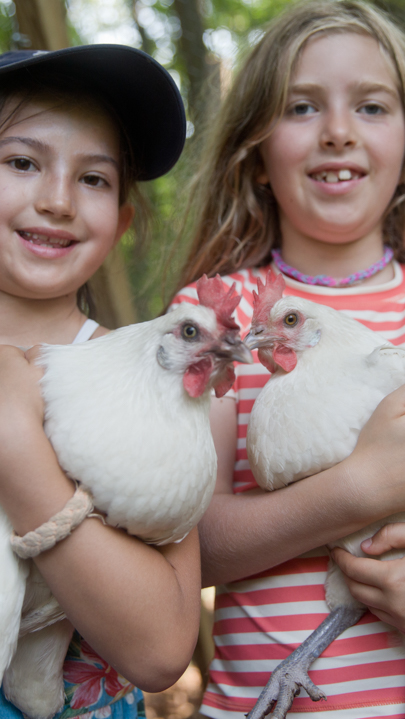The Gingerbread House

Our cooking instructor, Eva Szigeti, suggests the healthy-risk-taking holiday activity of gingerbread house making from scratch, giving us building advice and a recipe.
The popularity of gingerbread has a long history. Research suggests that gingerbread houses originated in 16th century Germany, but they gained popularity later thanks to the Brothers Grimm fairy tale Hansel and Gretel, in which an evil witch lures two hungry children with a house made out of gingerbread.
The story of Hansel a Gretel has many interpretations and symbolic meanings; one of them being fear of hunger and the fear of being abandoned by loved ones, more specifically by parents. In the fairy tale version most likely found on the bookshelves of our children, Hansel and Gretel simply get lost in the dark forest. This is the edited, child-friendly version of the story adapted to our cultural sensibilities. In the original version from the collection of Brothers Grimm, the children are left in the forest by their parents intentionally. During a time of famine, the evil mother/stepmother chose self-preservation over the children.
Even young children know that at the end of the fairy tale, good will triumph over evil. In the cycle of the year and the seasons, light will triumph over darkness again. To fill the (literally) darkest days of the year with light, it seems appropriate to find ways to express gratitude for love, food, and everything that sustains us and gives meaning to our lives. One of my favorite ways to do this is by spending time in the kitchen with my children.
As we planned our pre-holiday baking projects, my daughter suggested that we make a gingerbread house. Although gingerbread cookies have always been on our holiday menu, we have never tried to make a gingerbread house.
First, I thought it was a good idea. But after considering all the work involved, the mess, and the relatively high probability of a baking disaster, I wasn’t so sure anymore.
Of course, my child insisted, and it seemed wrong to cause a disappointment just because I was not in the mood for a big project. Soon, both children were excited about the prospect of having a homemade gingerbread house, and they were ready to do their part. We decided not to take any short cuts and not to buy a gingerbread kit.
We looked up several instructions online. It seemed the most challenging issue was the structural one: how to make the bond between the walls strong that the house would not cave in. Some websites suggested that the only way to achieve a sturdy structure was to use crazy clue instead of icing. This, of course, would make the house inedible. I did not want to take that road. I like food to stay food, even when it takes on another form and function. Pairing gingerbread with glue seemed unfair to the yummy gingerbread. We had to figure out a way to make it work with icing. My son, who is interested in architecture and engineering, was responsible for the structural design.
My first suggestion was to make a simple chalet-style house. This would mean having only two triangle-shaped walls for the front and the back of the house, and two rectangle pieces for the roof, coming all the way down. No structural problems here. My son objected: “No one gets anywhere without taking a risk.” I had to reconsider. After all, trying to make a more elaborate house was a reasonable risk to take.
Using pieces of a construction set, my son built the skeleton of the house. This would later be placed inside of the gingerbread house to support the walls, and to prevent it from caving in. Then, based on the size of the prototype, we drew the pattern. Making the dough, cutting out the pieces, and baking, followed the next day.
This is a project requiring patience. There is no instant gratification here. For us, it was reasonable to complete the house in the course of three days. A lot of planning and prep work was needed. At the same time, we had to be ready to give up the original plan in certain situations, to solve problems quickly, to be ready to troubleshoot and improvise, because things didn’t always go smoothly. On many levels, it was a great lesson for the children.
On the third day, it was time to put it all together and decorate. As for decoration, we opted for a simple solution free of artificial colors: white icing. While it was not easy to apply icing in a preplanned manner, icing did save the look of our house. Snow and icicles not only added a seasonal appearance to the house, they helped us to cover up the imperfections and mistakes. Thanks to icing, our first ever gingerbread house turned out just fine.

Gingerbread House Recipe
This recipe will make enough dough for a medium-sized gingerbread house. You should have enough leftover dough to bake some gingerbread cookies for the “builders”. You can design your own house or find a template online. Remember to bake a piece for a base to hold the house.
For the Dough:
2 sticks butter
1 cup sugar
1 ¼ cup molasses
3 eggs
7-8 cups all-purpose flour
1 tablespoon baking soda
1 teaspoon salt
1 ¼ teaspoons cinnamon
½ teaspoon allspice
1 teaspoon ground cloves
½ teaspoon ginger
Cream the butter and sugar. Add molasses and eggs. Mix until smooth.
Sift 5 cups of flour with the baking soda, salt, and spices. Gradually work into the egg mixture. Add 2-3 more cups of flour. Your dough should be heavy and stiff. Form into 4 balls, wrap in plastic wrap, and refrigerate overnight (or for at least 2 hours).
Preheat oven to 350 degrees F. Cover the baking sheets (you will need more than one) with parchment paper. Roll out a ball of dough to 1/8 inches thick. Place a paper pattern on the dough and, using a knife, cut out the shape. Gently put the shaped dough on the baking sheet. Continue rolling and cutting until you have all the pieces needed for the house. Bake the pieces for 10-15 minutes.
Gently place the baked pieces on a cooling rack. Allow the gingerbread to cool.
For the Icing:
3 cups confectioner’s sugar
2 egg whites
Beat the sugar and egg whites until thick and smooth.
Use a small round pastry tip for piping the icing. The parts of the house should be decorated before assembling. Allow the icing to harden. “Glass” windows can be made by “gluing” (with icing) a piece of wax paper over the window openings from the inside part of the walls.
Ideally, you should have a helper for the next step. To assemble the house, apply plenty of icing on the bottom of the front wall and on the bottom of one of the sidewalls, then on the inside angle of the walls. The walls need to be held in place until they dry. Repeat the process with the back wall and the other sidewall. You may need to wait several hours for the walls to dry fully before putting on the roof.
Use icing to cover mistakes or small openings between walls.




